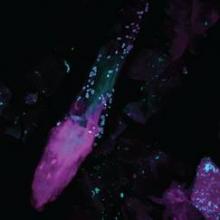DNA sequencing is helping researchers to get better acquainted with the fungi that inhabit the skin.
"By gaining a more complete awareness of the fungal and bacterial ecosystems, we can better address associated skin diseases, including skin conditions which can be related to cancer treatments," Dr. Heidi Kong, a dermatologist at the National Cancer Institute center for cancer research, said in a statement.
To provide a foundation for investigating fungal skin conditions, a research team from the NCI and the National Human Genome Research Institute examined fungi from 14 skin sites on 10 healthy adults.
"Fungal communities occupy complex niches, even on the human body," said Dr. Kong.
In fact, the feet are first when it comes to fungal diversity. Heels harbor approximately 80 genus-level types of fungi; researchers also identified 60 types in toenail swab samples and 40 types in samples from between the toes.
By contrast, the area inside the bend of the arms, the inside of the forearms, and the palms hosted 18-32 fungal genera each, while areas of the head and trunk, including the back, the back of the neck, inside and behind the ears, and between the eyebrows, contained just 2-10 types of fungi. Overall, Malassezia was the most popular genus, identified in 11 of the 14 body sites sampled.
"DNA sequence–based methods of identification enabled us to differentiate among species of fungi and to conclude that the diversity of fungi is highly dependent on the body site rather than the person," Dr. Kong said.
"Our study [Nature 2013 May 22 (doi:10.1038/nature12171)] focused on areas of the skin where we commonly find skin diseases that have been associated with fungi," she noted.
The researchers identified problems consistent with fungal infections, including heel scaling, toe web scaling, and toenail changes, in 20% of study participants.
Although individuals with heel site infections had common fungal communities at that site, those with toenail infections hosted a wide range of different fungal communities, the researchers noted.
In addition, they found "greater similarity in the fungal community structure on the left and right sides of the same person’s body compared to the same body parts on any two individuals," according to the press release. "Fungal communities also appear to be quite stable over time, with little change when tested on two separate occasions, up to 3 months apart."
On Twitter @hsplete


